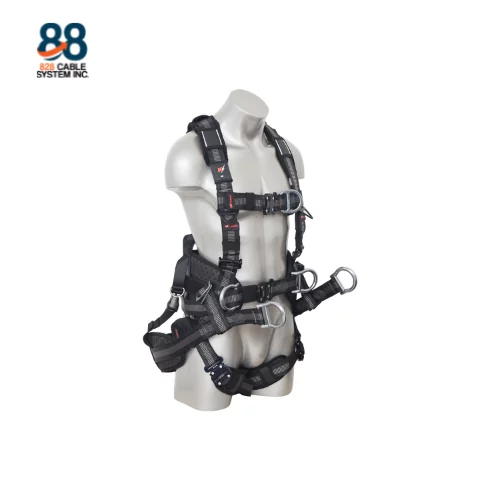
Everything You Need to Know About Full-Body Harnesses: Safety, Regulations, and Maintenance Tips
In industries where working at heights is routine, ensuring the safety of workers is paramount. One of the most crucial pieces of equipment in fall protection is the full-body harness. Evolving from less effective body belts, full-body harnesses are designed to keep workers suspended in an upright position after a fall, minimizing the risk of suspension-related injuries. This blog explores the essential aspects of full-body harnesses, including their components, safety regulations, maintenance tips, and more.
What is a Full-Body Harness?
A full-body harness is a safety device worn by workers at heights to protect against falls. Unlike traditional body belts, which were found to cause internal injuries during falls and subsequently banned in 1998, full-body harnesses distribute the force of impact over a larger area of the body. They typically consist of straps, buckles, D-rings, and padding, all carefully designed to provide comfort and security while preventing injuries.
Key Components of a Full-Body Harness
Straps and Buckles: Harness straps are typically made from durable webbing material and are adjustable to ensure a snug fit. Buckles allow for easy donning and doffing.
D-Rings: These are attachment points where the connecting lanyard or lifeline is secured. They are strategically positioned to distribute forces evenly across the body during a fall.
Padding: Provides comfort and helps in reducing pressure points, especially during prolonged wear.
Safety Regulations and Standards
In the United States, the Occupational Safety and Health Administration (OSHA) sets stringent regulations for fall protection equipment, including full-body harnesses. These regulations mandate that harnesses must be capable of withstanding certain forces and provide specific parameters for maximum free fall distances, deceleration distances, and maximum arresting forces. Compliance with these standards is crucial to ensuring the effectiveness of fall protection systems in preventing injuries.
Choosing the Right Full-Body Harness
Selecting the appropriate harness depends on several factors, including the type of work being performed, environmental conditions, and the individual’s comfort. Harnesses come in various sizes and configurations to suit different industries such as construction, roofing, and telecommunications. It’s essential to ensure a proper fit and adjustability to maximize comfort and safety.
Maintenance and Inspection Tips
Regular maintenance and inspection are vital for the safe operation of full-body harnesses. Harnesses should be inspected before each use for signs of wear, tear, or damage. This includes checking straps for fraying, inspecting buckles for proper functioning, and examining D-rings for deformation. A harness that has been used to arrest a fall must be taken out of service immediately and inspected by a competent person before further use.
Best Practices for Using Full-Body Harnesses
Proper training and familiarization with harness use are essential for all workers who may be exposed to fall hazards. This includes correct donning and doffing procedures, ensuring secure attachment to anchor points capable of supporting the required loads, and understanding the limitations of the equipment being used.
Takeaway
Full-body harnesses represent a significant advancement in workplace safety, offering comprehensive protection against fall hazards. By understanding their components, adhering to safety regulations, conducting regular maintenance, and promoting best practices, organizations can mitigate risks effectively. Prioritizing safety ensures that workers can perform their duties confidently and safely at elevated heights.
